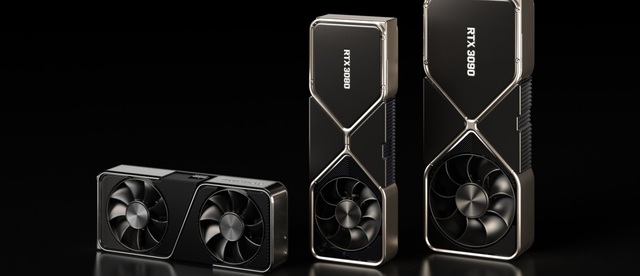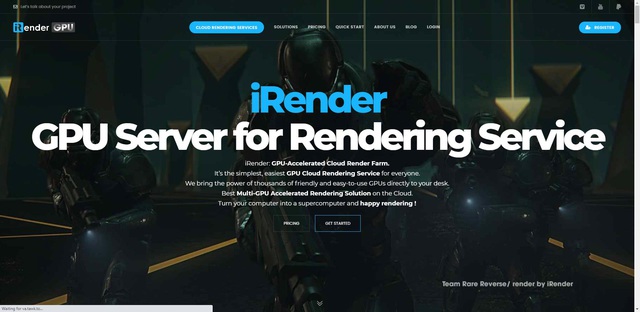Render farm generation 2.0
- Tram Ho
Cloud computing has brought many solutions to large-scale rendering problems , based on the available infrastructure that is a provider’s Render farm (Provider) consisting of hundreds to thousands of CPUs and GPUs for parallel computing. . The result is computational performance that is superior to that of single machines.
The most popular solution today is SaaS (Software-as-a-Service), where users can use cloud rendering services in a fairly simple and user-friendly way through the Provider’s application, while all other Technical factors, data, storage, … are automatically managed by the Provider. The current famous Render farms such as RebusFarm, Fox Renderfarm, GarageFarm, etc. are all long-standing SaaS providers. With SaaS, users do not need to bother installing, managing, and upgrading graphics software. Just upload the project to the Provider server and hit the render button. Seems easy right?
Explosion of GPUs – especially RTX generations – SaaS problems begin to emerge

Source: gsmarena.com
Since the introduction of the GPU until now, rendering processing technology has made great strides in power, thereby creating extremely realistic and smooth graphics experiences. The technology race between the world’s leading GPU vendors, most famously NVIDIA and AMD, has continuously produced a series of powerful GPU generations without stopping. (You can learn more about this trend here .)
The most prominent recently is probably Real Time Raytracing – RTX technology, on NVIDIA’s latest GPU lines. The Real Time Ray Tracing feature that simulates real-time light has been widely applied in games, but it has also gradually become popular in work or design applications, such as Lumion, Enscape, or popular The most famous is Unreal Engine.
New technologies on the GPU inevitably lead to a series of upgrades in the graphics software as well as changing a lot of work pipelines in studios to take advantage of this powerful wave. Today, in addition to the minimum hardware standard, graphics software are also constantly updated with versions compatible with new technologies on GPUs, such as the RTX series, or rendering on multi GPUs. Currently, there are many software that support rendering on multi GPUs: Octane, Redshift, iRay, NVIDIA Omniverse, etc.
To have an automated user experience, for example an artist using Houdini FX 18.5, rendering using Redshift, the Provider will have to integrate version 18.5 of the Houdini software and of course, Redshift as well. With many software, many versions, many renderers, etc. and their combinations, the System integration work of the Provider will be a huge amount. Some rendering farms following the SaaS model have started to lose their strength in this system integration race, such as RebusFarm.

Source: RebusFarm Facebook
Integration is not the only problem for SaaS
Underneath the SaaS solution is virtualization technology (virtualization), with the aim of consolidating hardware power. It is a complex issue because they involve computer-intensive technologies. To put it simply, it is like a bubble wrapped around hundreds of computers, and we will use the power of that giant computer system through the virtualization bubble.
The operating principle of the virtualization layer is to create a software environment, including the operating system and applications that run completely within it, from which it is possible to control the underlying hardware system through scripts. . Such indirect hardware control leads to the hardware’s performance not being able to reach the maximum level, because many instructions can conflict with hardware resources, or must be processed in the hardware’s own operating system. there.
In other words, SaaS prevents users from taking full advantage of the hardware power of the service provider. If you’re paying for 1 hour using a certain CPU/GPU configuration, you’re most likely losing 10-15% of the cost of the virtualization layer.
The next generation of Render farms
IaaS (Infrastructure-as-a-Service) is the solution to the integration problem. By handing over full control and control of the hardware to the user (with limitations of course for “sensitive” tasks), the IaaS Provider will not be responsible for managing elements of the user’s working environment. users anymore. A user using an IaaS solution for rendering will install his or her own working environment on the Provider’s infrastructure: applications, runtime, operating system, middleware, and data. As such, any updated software or technologies are no longer a matter of the IaaS Provider, i.e., no longer limited to software.
It may take some time for the user to set up the working environment when using the IaaS service for the first time. However, creating a working environment identical to your personal computer will make it easy for users to control everything. Imagine you are working on your own personal computer, but with the performance of a supercomputer.
Back to the story of the performance loss to the virtualization layer. Basically, all Cloud Computing technologies use virtualization technology. Unlike SaaS, when it no longer depends on the integration problem, an IaaS Provider can completely choose to combine virtualization technologies partially in each function of the system instead of virtualizing the entire infrastructure system. . Thus, in theory, users should be able to “get closer” to the provider’s infrastructure, and reduce performance loss.
That is in theory, to test this theory maybe we need more time and more than Render farms providing services as IaaS. You can try on famous IaaS Providers like iRender, Xesktop. If you have good IT knowledge, you can use Amazon’s AWS. iRender – the only representative from Vietnam in the top IaaS Provider for cloud rendering. In particular, the rendering performance on multi GPUs, for example iRender’s 6xRTX3090 server, is very impressive! Register to experience iRender’s service here .

Source: irendering.net
Source : Genk
